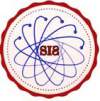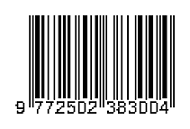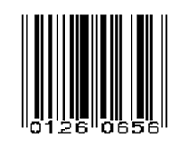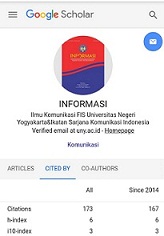The narration of religion on television, reconstruction of meaning and diversity
DOI:
https://doi.org/10.21831/informasi.v52i1.51628Abstract
This paper aims to construct the diversity reality of the society that has been presented in the media reality of television. Television presents symbols that need to be interpreted critically. When humans perform critical interpretation consciously, the meaning of diversity will be comprehensively grasped. On the contrary, when television shows cannot be interpreted in a mature frame of mind, it will become a serious problem for society. One of the serious issues deals with the abundant religious shows in the month of Ramadan. Religious television programs are part of religion commodification. Religion became a cheap trade. Ironically, many people enjoyed the show and served it as a guide. In fact, what is shown on television has largely blinded the reality of humanity and distanced human beings from civilization.
References
Baudrillard, J. (2016). The consumer society: Myths and structures. Sage.
Bineham, J. L. (1988). A historical account of the hypodermic model in mass communication. Communications Monographs, 55(3), 230-246.
Dolan, R., Conduit, J., Fahy, J., & Goodman, S. (2016). Social media engagement behaviour: A uses and gratifications perspective. Journal of Strategic Marketing, 24(3-4), 261-277.
Foltz, R. (2007). The religion of the market: Reflections on a decade of discussion. Worldviews: Global Religions, Culture, and Ecology, 11(2), 135-154.
Fore, W. F. (1987). Television and religion: The shaping of faith, values, and culture. Minneapolis, MN: Augsburg Publishing House.
Geertz, C. (1976). The religion of Java. University of Chicago Press.
Gerbner, G. (1984). Religion and television.
Hoover, S. M. (2006). Religion in the media age. Routledge.
Katz, E., Blumler, J. G., & Gurevitch, M. (1973). Uses and gratifications research. The public opinion quarterly, 37(4), 509-523.
Khisbiyah, Y., & Thoyibi, M. (2018). Kontestasi wacana keislaman di dunia maya: moderatisme, ekstremisme, dan hipernasionalisme. Pusat Studi Budaya dan Perubahan Sosial, Universitas Muhammadiyah Surakarta.
Kuntowijoyo (1999). Paradigma Islam: Interpretasi untuk aksi. Mizan.
Kuntowijoyo (2002). Selamat tinggal mitos selamat datang realitas. Mizan.
Luhmann, N. (1992). What is communication?. Communication theory, 2(3), 251-259.
Luo, X. (2002). Uses and gratifications theory and e-consumer behaviors: a structural equation modeling study. Journal of Interactive advertising, 2(2), 34-41.
Nwabueze, C., & Okonkwo, E. (2018). Rethinking the bullet theory in the digital age. International Journal of Media, Journalism and Mass Communications, 4(2), 1-10.
PPIM UIN Jakarta. (2021). Ringkasan eksekutif dakwah digital: Narasi agama di platform online dan televisi Indonesia.
Ruggiero, T. E. (2000). Uses and gratifications theory in the 21st century. Mass communication & society, 3(1), 3-37.
Setiawan, B. (2010). Tayangan Ramadan tidak mendidik. Kompas, 1 September.
Setiawan, B. (2019). Keterasingan pendidikan nasional. Spektrum Nusantara.
Shrum, L. J. (2009). Media consumption and perceptions of social reality: Effects and underlying processes. In Media effects (pp. 66-89). Routledge.
Sofjan, D., & Hidayati, M. (2013). Religion and Television in Indonesia. Globethics. net.
Sutrisno, M. (2009). Ranah-ranah kebudayaan: dalam esai. Kanisius.
Sutrisno, M., & Putranto, H. (2005). Teori-teori kebudayaan. Kanisius.
Syahputra, I. (2016). Agama di era media: Kode religius dalam industri televisi Indonesia. ESENSIA: Jurnal Ilmu-Ilmu Ushuluddin, 17(1), 125-138.
Weber, M. (1993). The sociology of religion. Beacon Press.
West, R., & Turner, L. H. (2018). Introducing Communication Theory: Analysis And Appliaction. McGraw-Hill Education.
Zamroni, M. (2016). Potret Dakwah Kontroversial Tayangan Televisi. Aplikasia: Jurnal Aplikasi Ilmu-ilmu Agama, 16(1), 35-50.
H R. T i r m i d z i 2 / 5 0.
Goodstats (2022). Masyarakat Indonesia lebih gemar menonton tv setiap bulan Ramadan. https://goodstats.id/article/masyarakat-indonesia-lebih-gemar-menonton-tv-setiap-bulan-ramadan-n5kL9, akses 29 April 2022.
Katadata.co.id (2022). Survei JakPat para pencari tuhan jadi acara tv sahur paling populer. https://databoks.katadata.co.id/datapublish/2022/04/12/survei-jakpat-para-pencari-tuhan-jadi-acara-tv-sahur-paling-populer, akses 29 April 2022.
Downloads
Published
Issue
Section
License
Authors who publish with this journal agree to the following terms:- Authors retain copyright and grant the journal right of first publication with the work simultaneously licensed under a Creative Commons Attribution License that allows others to share the work with an acknowledgement of the work's authorship and initial publication in this journal.
- Authors are able to enter into separate, additional contractual arrangements for the non-exclusive distribution of the journal's published version of the work (e.g., post it to an institutional repository or publish it in a book), with an acknowledgement of its initial publication in this journal.
- Authors are permitted and encouraged to post their work online (e.g., in institutional repositories or on their website) prior to and during the submission process, as it can lead to productive exchanges, as well as earlier and greater citation of published work (See The Effect of Open Access).





















